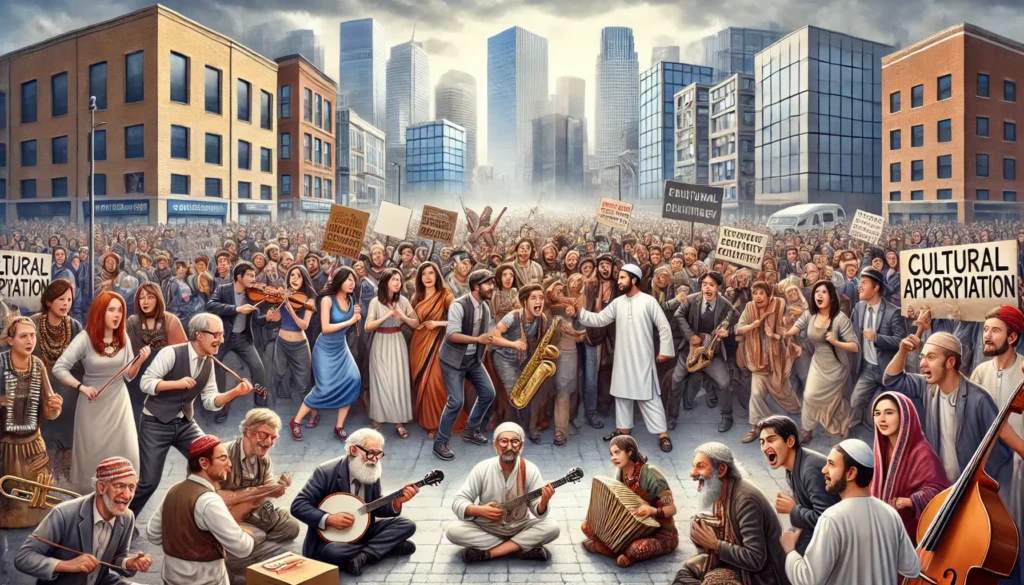Cultural Appropriation – When Sharing Becomes Stealing
From Admiration to Accusation
Once, borrowing ideas from other cultures was celebrated as creativity. Food, music, art, and fashion spread across borders — and culture thrived.
Today, the same exchange is rebranded as cultural appropriation. What was once admiration is now theft. What was once diversity is now a crime.
The result? Fear, resentment, and endless policing of who can eat, wear, or sing what.
What Is Cultural Appropriation?
In activist terms, cultural appropriation means members of a “dominant” group adopting elements of a “marginalised” group’s culture, supposedly without permission and in ways that exploit power imbalances.
Examples include:
- A white person with dreadlocks.
- A pop star wearing a sari in a music video.
- A chef cooking food from another culture.
Intent doesn’t matter. Even admiration is cast as exploitation.
Buzzwords of Cultural Appropriation
The concept comes packaged with jargon:
- “Power dynamics” – Borrowing = theft if you’re from the “wrong” group.
- “Authenticity” – Only insiders can represent traditions.
- “Harm” – Hurt feelings treated as real damage.
- “Exploitation” – Success with borrowed ideas framed as profiteering.
Translation: everyday cultural mixing becomes oppression with a vocabulary upgrade.
How It Shows Up in Practice
- Fashion – Designers attacked for using traditional patterns.
- Music – Artists scolded for singing or sampling styles from other cultures.
- Food – Chefs “called out” for cooking cuisines that aren’t their own.
- Education – Books, plays, or art challenged for “misrepresenting” cultural identities.
Instead of global exchange, cultural life becomes a minefield.
Why Activists and Institutions Promote It
Because outrage pays.
- Activists gain moral leverage by framing curiosity as oppression.
- Universities teach students to spot “appropriation” everywhere.
- Corporations enforce “sensitivity” rules to shield brands.
- Media amplifies scandals for clicks — and clicks mean revenue.
The outrage may be performative, but the profits are real.
The Consequences of Cultural Appropriation Thinking
- Division – Cultures treated as private property, not shared heritage.
- Fear – Creators self-censor to avoid backlash.
- Exploitation – Activists and consultants profit from managing outrage.
- Irony – The same voices who preach diversity restrict the mixing that creates it.
A concept meant to protect traditions ends up strangling them.
Why It Matters
Culture has always spread by mixing. Jazz, pizza, denim, sushi — all born from exchange. If borrowing becomes theft, culture stops evolving.
Cultural appropriation doesn’t protect identity. It politicises it. The effect isn’t respect, but suspicion and division.
From Global Exchange to Cultural Policing
Cultural appropriation reframes human history’s greatest strength — cultural mixing — as a crime.
The irony? Activists shouting “stay in your lane” are building walls where bridges used to stand. Diversity dies when culture is locked behind gates.
FAQ
What is cultural appropriation in simple terms?
It’s when people adopt cultural elements from another group, framed as exploitation or theft.
Why is cultural appropriation controversial?
Because it turns admiration and exchange into accusations of oppression.
Where does cultural appropriation show up?
In fashion, music, food, art, and education — anywhere culture crosses boundaries.
Who promotes the idea of cultural appropriation?
Activists, universities, corporations, and media outlets that profit from outrage.
How does cultural appropriation link to DEI and identity politics?
It’s framed as part of Diversity, Equity, and Inclusion.
Appropriation debates enforce Inclusion, justify Systemic Racism, and reinforce Whiteness.



